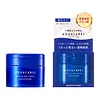What's inside
What's inside
 Key Ingredients
Key Ingredients

 Benefits
Benefits

 Concerns
Concerns

No concerns
 Ingredients Side-by-side
Ingredients Side-by-side

Potassium Methoxysalicylate
BleachingTocopheryl Acetate
AntioxidantGlutamic Acid
HumectantAlanine
MaskingMethionine
Skin ConditioningPEG/PPG-14/7 Dimethyl Ether
Skin ConditioningGlycine Soja Seed Extract
Skin ConditioningGlycine Soja Extract
Skin ConditioningYeast Extract
Skin ConditioningSoluble Collagen
HumectantSodium Acetylated Hyaluronate
HumectantSodium Hyaluronate
HumectantWater
Skin ConditioningGlycerin
HumectantDipropylene Glycol
HumectantPEG-8 Dimethicone
EmulsifyingTetradecane
PerfumingMethyl/Phenyl Polysilsesquioxane
Cetyl Ethylhexanoate
EmollientButylene Glycol
HumectantPEG-9 Polydimethylsiloxyethyl Dimethicone
EmulsifyingTrimethylsiloxysilicate
EmollientTrehalose
HumectantPolyvinylalcohol Crosspolymer
Potassium Hydroxide
BufferingIsohexadecane
EmollientAcrylates/C12-22 Alkyl Methacrylate Copolymer
Alcohol Denat.
AntimicrobialTrisodium EDTA
Sodium Metabisulfite
AntioxidantSodium Metaphosphate
BufferingPhenoxyethanol
PreservativeParfum
MaskingCI 77491
Cosmetic ColorantCI 77492
Cosmetic ColorantPotassium Methoxysalicylate, Tocopheryl Acetate, Glutamic Acid, Alanine, Methionine, PEG/PPG-14/7 Dimethyl Ether, Glycine Soja Seed Extract, Glycine Soja Extract, Yeast Extract, Soluble Collagen, Sodium Acetylated Hyaluronate, Sodium Hyaluronate, Water, Glycerin, Dipropylene Glycol, PEG-8 Dimethicone, Tetradecane, Methyl/Phenyl Polysilsesquioxane, Cetyl Ethylhexanoate, Butylene Glycol, PEG-9 Polydimethylsiloxyethyl Dimethicone, Trimethylsiloxysilicate, Trehalose, Polyvinylalcohol Crosspolymer, Potassium Hydroxide, Isohexadecane, Acrylates/C12-22 Alkyl Methacrylate Copolymer, Alcohol Denat., Trisodium EDTA, Sodium Metabisulfite, Sodium Metaphosphate, Phenoxyethanol, Parfum, CI 77491, CI 77492
Tranexamic Acid
AstringentDipotassium Glycyrrhizate
HumectantWater
Skin ConditioningDipropylene Glycol
HumectantHydrogenated Poly(C6-12 Olefin)
Skin ConditioningGlycerin
HumectantDiglycerin
HumectantHydrolyzed Hyaluronic Acid
HumectantSodium Hyaluronate
HumectantMagnesium Ascorbyl Phosphate
AntioxidantTocopherol
AntioxidantPentylene Glycol
Skin ConditioningLimnanthes Alba Seed Oil
Skin ConditioningOctyldodecanol
EmollientDimethicone
EmollientTriethylhexanoin
MaskingGlyceryl Stearate
EmollientSodium Stearoyl Glutamate
CleansingDisodium EDTA
Carbomer
Emulsion StabilisingSodium Metabisulfite
AntioxidantXanthan Gum
EmulsifyingBehenyl Alcohol
EmollientPhenoxyethanol
PreservativeTranexamic Acid, Dipotassium Glycyrrhizate, Water, Dipropylene Glycol, Hydrogenated Poly(C6-12 Olefin), Glycerin, Diglycerin, Hydrolyzed Hyaluronic Acid, Sodium Hyaluronate, Magnesium Ascorbyl Phosphate, Tocopherol, Pentylene Glycol, Limnanthes Alba Seed Oil, Octyldodecanol, Dimethicone, Triethylhexanoin, Glyceryl Stearate, Sodium Stearoyl Glutamate, Disodium EDTA, Carbomer, Sodium Metabisulfite, Xanthan Gum, Behenyl Alcohol, Phenoxyethanol
 Reviews
Reviews

Ingredients Explained
These ingredients are found in both products.
Ingredients higher up in an ingredient list are typically present in a larger amount.
Dipropylene Glycol is a synthetically created humectant, stabilizer, and solvent.
This ingredient helps:
Dipropylene glycol is technically an alcohol, but it belongs to the glycol family (often considered part of the ‘good’ alcohols). This means it is hydrating and gentle on skin unlike drying solvent alcohols like denatured alcohol.
As a masking agent, Dipropylene Glycol can be used to cover the smell of other ingredients. However, it does not have a scent.
Studies show Dipropylene Glycol is considered safe to use in skincare.
Learn more about Dipropylene GlycolGlycerin is already naturally found in your skin. It helps moisturize and protect your skin.
A study from 2016 found glycerin to be more effective as a humectant than AHAs and hyaluronic acid.
As a humectant, it helps the skin stay hydrated by pulling moisture to your skin. The low molecular weight of glycerin allows it to pull moisture into the deeper layers of your skin.
Hydrated skin improves your skin barrier; Your skin barrier helps protect against irritants and bacteria.
Glycerin has also been found to have antimicrobial and antiviral properties. Due to these properties, glycerin is often used in wound and burn treatments.
In cosmetics, glycerin is usually derived from plants such as soybean or palm. However, it can also be sourced from animals, such as tallow or animal fat.
This ingredient is organic, colorless, odorless, and non-toxic.
Glycerin is the name for this ingredient in American English. British English uses Glycerol/Glycerine.
Learn more about GlycerinPhenoxyethanol is a preservative that has germicide, antimicrobial, and aromatic properties. Studies show that phenoxyethanol can prevent microbial growth. By itself, it has a scent that is similar to that of a rose.
It's often used in formulations along with Caprylyl Glycol to preserve the shelf life of products.
Sodium Hyaluronate is hyaluronic acid's salt form. It is commonly derived from the sodium salt of hyaluronic acid.
Like hyaluronic acid, it is great at holding water and acts as a humectant. This makes it a great skin hydrating ingredient.
Sodium Hyaluronate is naturally occurring in our bodies and is mostly found in eye fluid and joints.
These are some other common types of Hyaluronic Acid:
Learn more about Sodium HyaluronateSodium metabisulfite is also known as Sodium Pyrosulfite. It is a preservative, antioxidant, and disinfectant.
As a preservative, it helps stabilize cosmetic formulas without affecting their color or scent.
Water. It's the most common cosmetic ingredient of all. You'll usually see it at the top of ingredient lists, meaning that it makes up the largest part of the product.
So why is it so popular? Water most often acts as a solvent - this means that it helps dissolve other ingredients into the formulation.
You'll also recognize water as that liquid we all need to stay alive. If you see this, drink a glass of water. Stay hydrated!
Learn more about Water